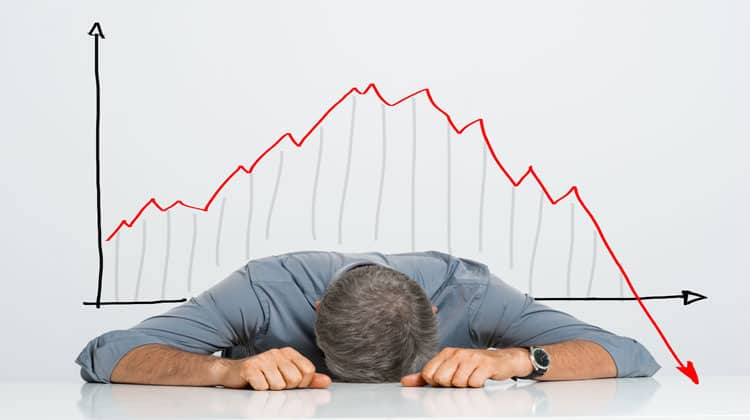THIS POST MAY CONTAIN AFFILIATE LINKS. PLEASE SEE MY DISCLOSURES. FOR MORE INFORMATION.
Financial crashes occur suddenly in markets, wiping out trillions of dollars of wealth and causing significant financial difficulties for people.
Economic crashes lead to a loss of confidence, resulting in significant impacts on employment numbers and the stability of retirement funds.
The protection of financial security requires knowledge about the origins of crashes, along with preventive measures.
The initial unpredictability of crashes gives way to economic behaviors and external shocks.
People who learn about crash causes and implement new protective measures can reduce their exposure while feeling more confident during economic challenges.
The article examines the factors that contribute to financial crises and looks into warning signs, as well as effective financial protection strategies.
Knowledge of lesser-known protective tools, such as umbrella insurance, becomes essential for staying safe, the extensive analysis of this insurance shows its ability to provide additional protection against market crashes; the correct preparation will allow you to withstand market declines while becoming more resilient for the future.
Common Causes of Financial Crashes

Financial crashes stem from multiple elements that combine to increase risk, rather than emerging from a single cause.
The development of economic bubbles represents one widespread trigger that leads to financial crashes.
Asset prices rise beyond their fundamental value due to speculation rather than essential factors, creating asset price bubbles.
The rapid collapse of prices after a bubble bursts causes extensive financial damage.
Excessive debt combined with high financial system leverage serves as a primary factor that drives financial crashes.
Heavy borrowing practices by people, businesses, and governments make them more sensitive to economic disruptions.
Unpayable debts combined with creditor doubt will create default situations, which then lead to financial problems throughout the system.
The absence of effective regulation, combined with the rapid growth of sophisticated and risky financial instruments, exacerbates the situation.
The lack of proper oversight allows speculative activities to grow unchecked, thereby increasing the risk to the entire system.
Unforeseen external events, including wars, natural disasters, and pandemics, serve as crash triggers by creating unexpected disruptions to markets and economies.
Market crashes often result from a decline in investor confidence.
The combination of fear and panic leads investors to sell their assets rapidly, thus transforming market adjustments into complete market collapses.
Understanding these causes helps explain why it is essential to stay alert and prepare in advance.
Umbrella Insurance Cost: An Overlooked Safety Net

During periods of financial uncertainty, most people concentrate on their investments and savings, but insurance tends to receive minimal attention.
Umbrella insurance serves as an often-overlooked financial protection that extends coverage beyond what standard home, auto, or renters insurance policies provide.
This insurance provides extra financial security when you encounter major claims or legal cases that exceed your existing policy limits.
The annual premium for umbrella insurance depends on factors such as coverage limits, location, and individual risk profile, but insurance costs typically start around $200 per year.
This makes it an affordable way to expand your financial protection.
The coverage offers valuable peace of mind by shielding you from unforeseen legal and financial liabilities, especially during periods of economic uncertainty.
Including umbrella insurance in your overall protection strategy can help preserve your assets and savings from costly legal judgments, by understanding how umbrella insurance works, along with common coverage options and typical umbrella insurance cost, you can make more informed decisions to strengthen your financial safety net.
It’s a practical step toward protecting against risks that go beyond the limits of standard insurance policies.
Early Warning Signs to Watch For
You can obtain precious time to modify your plans and minimize risk exposure through the early detection of financial collapse indicators.
Fast price inflation in assets that fail to align with economic fundamentals functions as a strong warning sign.
Stock price increases, along with rises in the housing market and other investment values that occur too quickly, indicate the formation of speculative bubbles.
Corporate and personal debt levels serve as essential warning signs of economic trouble.
When debt levels surpass both income and economic growth rates, the financial system exhibits greater instability.
The market shows signs of instability, characterized by significant price fluctuations and unexpected price decreases.
Monitoring economic indicators, including GDP growth rates, unemployment levels, and inflation rates, helps determine the state of the economy.
The economy’s health becomes more uncertain when significant changes or disturbing trends occur in these important economic indicators.
Your ability to detect warning signs in advance will help you make better decisions ahead of a financial crash.
How to Protect Yourself Financially

The foundation of financial protection begins with diversification.
The distribution of investments across multiple asset categories and sectors minimizes the negative effects when one sector experiences a market decline.
An emergency fund containing three to six months’ worth of expenses serves as a vital resource to handle unexpected costs without forcing you to sell investments at unfavorable prices.
Your exposure to market shocks will decrease when you minimize borrowing amounts and choose financial products with low risk levels.
Following reliable financial news and consulting experts enables you to predict changes so you can respond thoughtfully instead of making impulsive decisions.
Additional Tips for Financial Security During Crashes
When markets crash, you should keep your focus on the long-term and prevent hasty selling of assets.
Market recoveries tend to happen in the long term, according to historical data, while impulsive decisions tend to result in permanent losses.
A financial advisor will help you develop customized strategies that match your risk level and financial objectives.
A shift toward safer investments in a portfolio during periods of rising market volatility helps minimize potential losses.
Your ability to understand your risk tolerance enables you to develop an investment strategy that safeguards your assets while promoting growth.
Final Thoughts
Financial crashes can create distress, but you can maintain your financial objectives by understanding their causes and implementing advanced protective measures.
The combination of economic bubbles with excessive debt, regulatory gaps, and external shocks leads to market crashes, but early warning sign recognition provides you with an advantage.
Your financial defenses become stronger through the implementation of protective measures, including diversification, emergency savings, and umbrella insurance.
The cost-effective nature of umbrella insurance protects your assets from liabilities that could otherwise harm your financial stability during uncertain times.
Strategic planning, combined with knowledge, enables you to navigate market downturns with confidence and establish enduring financial security.
Before You Go….
While market crashes can be scary, it is critical you try to remain calm so you can make smart decisions.
Here are some additional articles to help you out.

